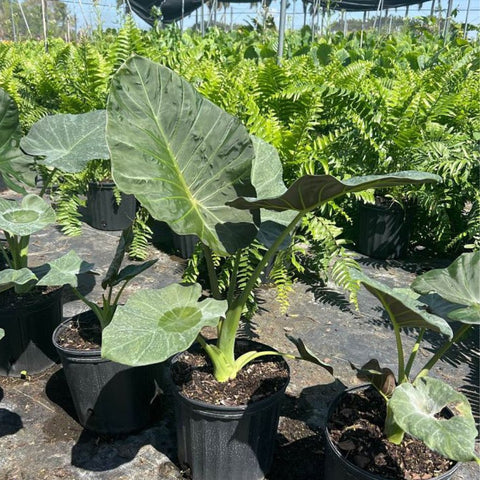Introduction: The Importance of Natural Pest Control
Gardening in the spring is an exhilarating experience, filled with the promise of new life and vibrant growth. Imagine a gardener, Joan, tending to her tender seedlings, only to find them ravaged by pests overnight. Determined to preserve her garden, she turns to natural pest control methods, transforming her garden into a resilient paradise.
Natural pest control is not just about preserving your plants but also about contributing to the ecological balance. Using natural methods helps minimize environmental impact and protect beneficial organisms that contribute to a thriving garden ecosystem. This blog post delves into the world of natural pest control, offering insights and strategies to help gardeners like Joan safeguard their gardens.

Understanding Common Spring Garden Pests
Types of Common Pests
Spring gardens often face threats from various pests. Understanding these adversaries is the first step in effectively managing them.
-
Aphids: These tiny, soft-bodied insects feed on plant sap, leading to distorted growth and the possible spread of plant viruses.
-
Slugs and Snails: Known for their nocturnal feeding, they leave behind slimy trails and large holes in leaves.
-
Caterpillars: These voracious feeders can quickly defoliate plants, stunting growth or even causing death.
-
Whiteflies: Small, flying insects that extract sap and excrete a sticky substance that can encourage mold growth.
-
Spider Mites: Difficult to see with the naked eye, they damage foliage by sucking plant juices, leading to stippled or bronzed leaves.
Identifying Pest Damage
Early detection of pest damage is crucial for effective control. Recognizing the symptoms can help address infestations before they become severe.
-
Leaf Discoloration and Wilting: This can be caused by sap-sucking pests such as aphids and whiteflies.

-
Chewed Leaves and Stems: Indicative of larger pests like caterpillars and snails.
-
Silky Webbing: Often a sign of spider mites, especially on indoor plants.
-
Stunted Growth and Distorted Leaves: Usually the result of feeding habits of aphids and certain larvae.
Natural Pest Control Methods
Companion Planting
Companion planting involves growing certain plants together to repel pests or attract beneficial insects.
-
Marigolds: They release a strong scent that can deter aphids and nematodes.
-
Basil: Effective against thrips and flies, basil can protect tomato plants while contributing culinary benefits.
-
Lavender: Repels moths, fleas, flies, and mosquitoes.
Encouraging Beneficial Insects
Beneficial insects are nature’s pest controllers. Introducing or attracting them can significantly reduce pest populations.
-
Ladybugs: These beetles consume large numbers of aphids, mites, and other soft-bodied pests.

-
Lacewings: Their larvae are predatory, feeding on aphids, caterpillar eggs, and other small insects.
-
Hoverflies: Hoverfly larvae are formidable pest predators, particularly for aphids.
To attract these insects, plant a variety of flowering plants to provide nectar and pollen sources.
Organic Sprays and Solutions
Natural sprays can be a safe alternative to chemicals, targeting pests without harming the environment.
-
Neem Oil: Derived from the neem tree, this oil disrupts the life cycle of insects, reducing infestations when sprayed on affected plants.
-
Insecticidal Soap: Works effectively on soft-bodied pests without harming beneficial insects or the plants themselves.
-
Diatomaceous Earth: This natural powder is abrasive to pests like slugs and beetles, providing a physical deterrent.
Creating a Garden Environment That Discourages Pests
Soil Health and Fertility
Healthy soil is the foundation of resilient plant growth. Ensuring soil fertility can naturally deter pests by enhancing plant vigor and immunity.

-
Use organic compost to enrich soil with nutrients and beneficial microorganisms.
-
Consider a balanced organic fertilizer tailored to specific plant needs.
Physical Barriers
Physical barriers provide a literal line of defense between plants and pests.
-
Row Covers: These lightweight fabrics can prevent access to plants by insects while still allowing sunlight and rainfall penetration.
-
Handpicking: Manually removing larger pests like caterpillars and slugs can protect precious blooms and fruits.
-
Copper Tape: Effective around pots to deter snails and slugs due to the reaction between slug slime and copper.
Implementing a Pest Management Plan
Monitoring and Action Plan
Creating an action plan for pest management involves regular monitoring and timely intervention.
-
Conduct weekly inspections to catch early pest activity.
-
Record observations and actions taken to track pest trends over time.

-
Consider integrating new plant varieties that are naturally pest-resistant.
Seasonal Adjustments and Precautions
Adjust your pest management strategies to align with seasonal changes.
-
Anticipate increased aphid activity in spring and apply preventive neem oil sprays accordingly.
-
Use beneficial nematodes in the soil to control overwintering pest larvae from emerging in spring.
Conclusion: Embracing Natural Pest Control
Natural pest control supports a healthier, more sustainable gardening practice that benefits the environment and promotes biodiversity. By using techniques such as companion planting, encouraging beneficial insects, and implementing organic solutions, gardeners can repel pests and achieve thriving gardens.
By embracing these methods, you can transform your garden into a sanctuary that thrives in harmony with nature.






























Comments (0)
There are no comments for this article. Be the first one to leave a message!